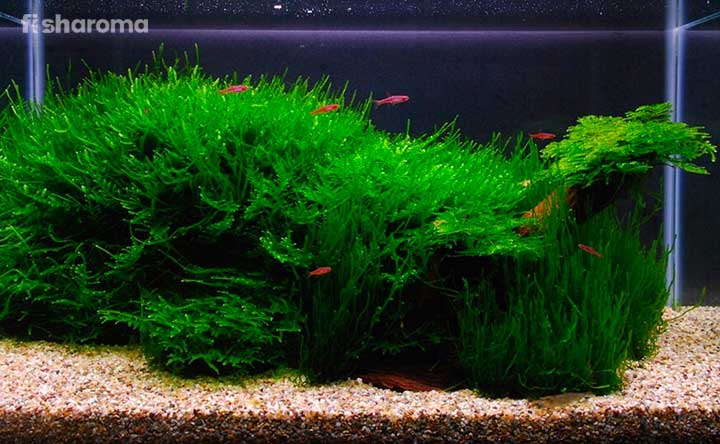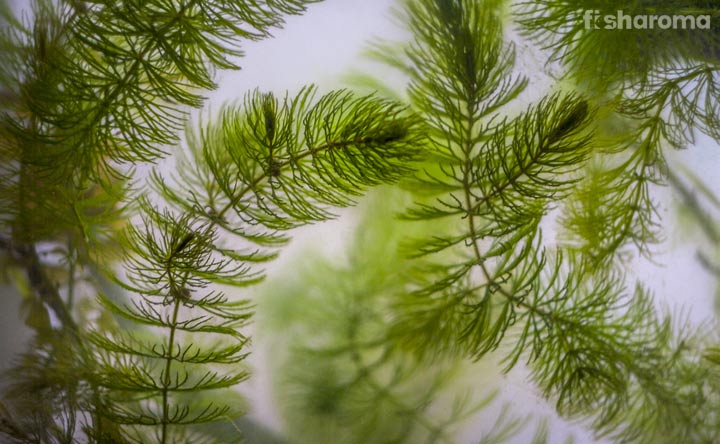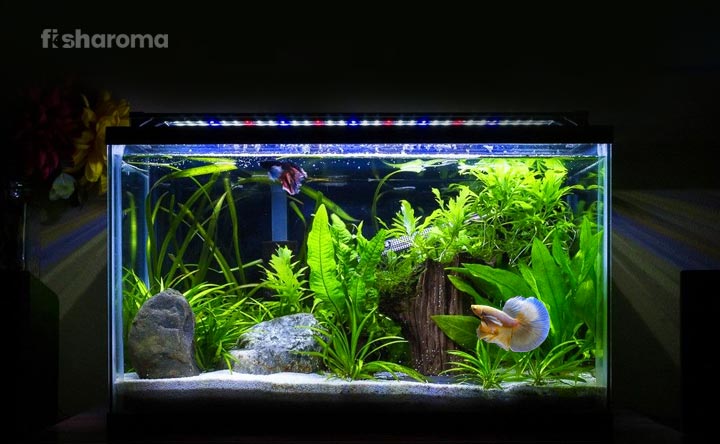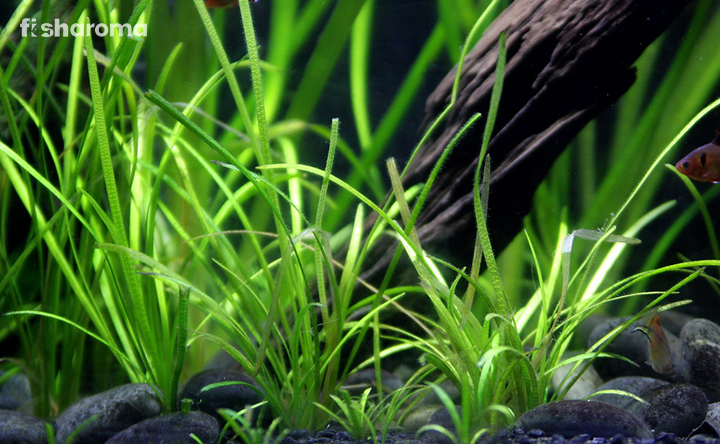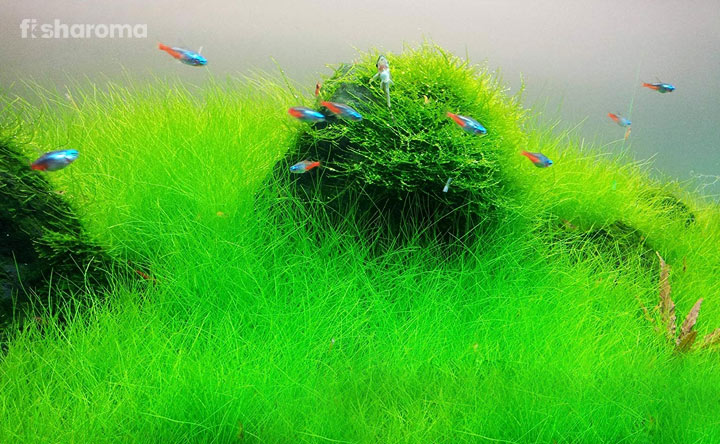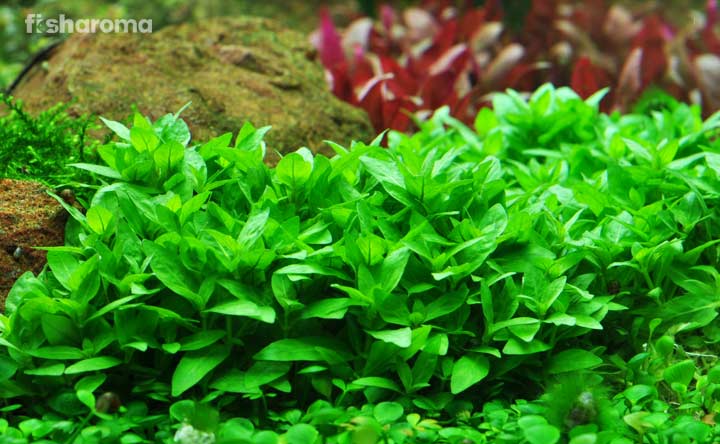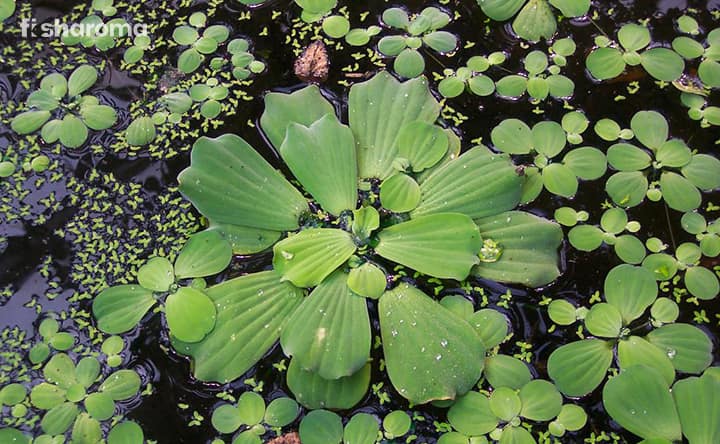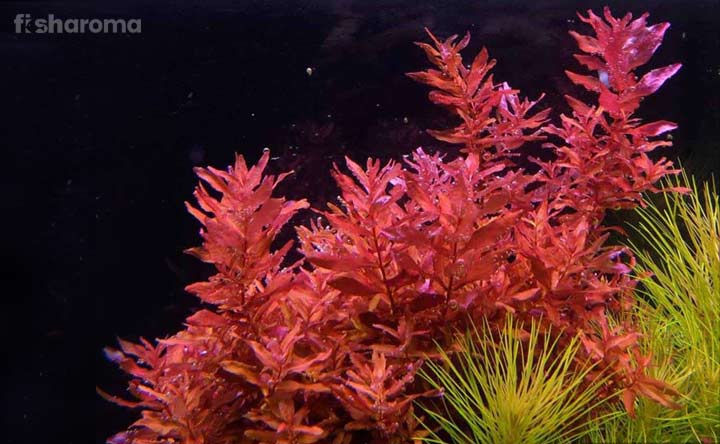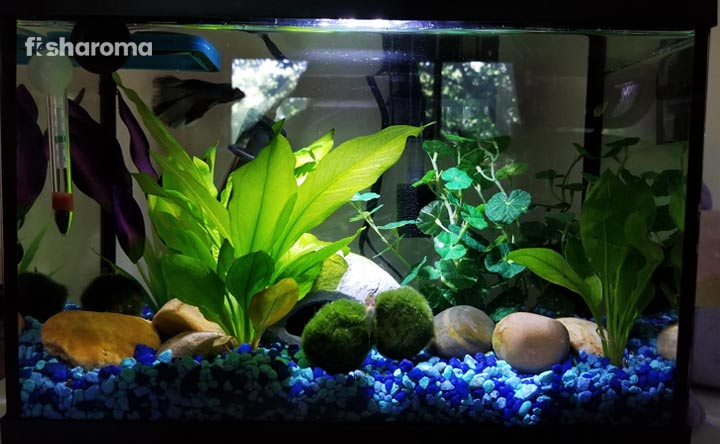Water Wisteria: The Complete Care Guide

- Origin & Habitat of Water Wisteria
- Appearance of Water Wisteria
- Benefits of Water Wisteria
- Tank Requirements for Water Wisteria
- Water Type for Water Wisteria
- Plantation Procedure of Water Wisteria
- Care & Maintenance of Water Wisteria
- Propagation of Water Wisteria
- Compatibility of Water Wisteria
- Summary
Mostly, people tend to think that growing plants in an aquarium is extremely difficult and requires a lot of effort. That may be true for some plants, but definitely not for the one that we are going to discuss today. Whether you are a beginner or an expert aquarist, you can never go wrong with a water wisteria because of how easy it is to maintain. So, here is our guide on how to take care of this beautiful aquatic plant.
Key Specifications of Water Wisteria
Understanding the background of a particular species of plant is vital for raising and rearing it at home. Therefore, we bring before you the key specifications of water wisteria.
| Scientific Name | Hygrophila difformis |
| Family | Acanthaceae |
| Care Level | Easy |
| Size | Maximum 20” (50 cm) |
| Growth Rate | Fast |
| Tank Size | 10 Gallons |
| Lighting | Moderate to High |
| Water Conditions | 70-82° F (21-27° C), 6.5-7.5 pH, 2-8 KH |
Overview
Native to the Indian subcontinent, water wisterias are found in marshy habitats and can be seen both floating on the water surface as well as rooted underwater, growing partially immersed.
Its slow, ethereal and peaceful movements are known to have a calming effect on whoever lays their eyes on them. Many therapists recommended this plant to people suffering from anxiety and high-stress because it is believed that staring at an aquarium that has water wisteria eliminates exhaustion from the body. Besides, they also serve as a magnificent décor in your home and office.
Origin & Habitat of Water Wisteria
As stated above, water wisterias grow in the Indian subcontinent, precisely in India, Nepal, Bangladesh, and Bhutan. They can be found in the shallow water of marshlands. In the wild, they are mostly seen during the rainy season, but in an aquarium set up, they can be grown during any season by moderating the climate inside the tank.
Appearance of Water Wisteria
With bright green leaves and a slightly darker stem, water wisterias can reach a height of 7-20” (20-50 cm) and a width of 5-10” (15-20 cm). This means that they can take up a lot of space in your aquarium and might block out the much-required lights for your fish if the leaves are left uncontrolled and untrimmed for a prolonged period of time. On the brighter side, it can serve as hiding spots for the fish and other species in your tank.
The plant is anchored to the substrate through its thin white root. Their stem is extremely firm because it has to support the weight of its large, heavy and protruding leaves.
You can choose to spread the plant across the bottom layer of your tank as a carpet or you can also let it climb up to the water surface.
Probably, the most interesting feature of water wisteria is that it displays heterophylly. In the world of botany, heterophylly is a phenomenon in which leaves undergo marked changes in them in response to changes in its environment.
The luscious leaves give a more earth-like natural dimension to an aquarium which is always a sight to behold.
Benefits of Water Wisteria
Similar to most aquatic plants, water wisteria also brings along with itself a bunch of benefits. Some of the most prominent among them are as follows.
- When spread like a carpet at the bottom of a fish tank, water wisteria can provide a home for bottom-dwelling fish such as loaches.
- When kept higher up on the water surface, it serves as hiding spots for fish that prefer swimming in the mid-tier and top-tier of the tank.
- Many species of fish love eating its leaves because of its nutritious value.
- It is easy to breed them. As a result, you don’t have to spend your money on buying another wisteria for your tank.
- They add a great aesthetic value to the aquarium.
- The soothing motion in which the leaves move underwater reduces stress and lowers blood pressure and anxiety when you stare at it.
Tank Requirements for Water Wisteria
Although water wisterias are pretty undemanding, there are certain elements that you need to provide it in order for it to thrive healthily.
Tank Size
Due to the amount of space it takes up, it is recommended that it should be kept in a tank that can least fit more than 10 gallons of water.
Nature of Lighting
In its natural habitat, it prefers warm shallow water that has a lot of exposure to sunlight. However, due to the fact that a fish tank can’t be kept directly under sunlight since it would affect the temperature of the water and accelerate the growth of algae; therefore you need to provide artificial lights for it to prosper. The light has to be kept on for at least 10 hours of the day.
Most aquarists are afraid to keep their artificial lights on for a longer period of time since it encourages cyanobacteria and algae growth, but a water wisteria eliminates this problem because of its high nutrient requirements. This essentially means it feeds off the same nutrients that bacteria and algae feed on, thereby, cutting their food supply and starving them to death and saving your aquarium in the process.
Moderate lighting will serve well for this plant and will accelerate its growth rate while also brightening the colors of its leaves. Subdued fluorescent and incandescent light are perfect choices for water wisterias.
Filter
Filtration helps keep the toxic out of the aquarium and supplies fresh oxygenated clean water back into the tank. Although plants are natural filters in themselves, having an additional mechanical filter lessens the load on the plants.
Try and select a mechanical filter that doesn’t cause too much surface splashing. It will ensure that the water wisteria remains undisturbed by the movements in the water caused by the filter while still reaping the benefits out of the filtration system.
Substrate
If you are planning to plant the water wisteria at the bottom of the tank, then you have to take into consideration what kind of substrate you are using.
The nutrient-based substrate is ideal for water wisteria since they are essential for its growth and development. Gravel-based substrate and the sand-based substrate can also be used, given they are regularly fertilized. However, choose fine gravels over larger-grained gravels since it will be easier for the roots to move through the fine grains in order to firmly hold the plant in place and soak nutrients.
Supplements
Although not mandatory, providing CO2 injections and liquid water fertilizers can help water wisterias to thrive healthily.
Make sure there is iron content in the liquid water fertilizers that you are using since that would promote fast growth in the plant. A lack of iron would result in the leaves turning pale and yellowish. This plant also requires phosphates and nitrate to survive, as a result of which, you need to keep a tab on their levels.
Water Type for Water Wisteria
Providing the right type of water is crucial for the survival of the water wisteria in your aquarium. Try to keep the following things in mind while selecting the water for this ethereal plant.
Temperature
The temperature of the water inside the tank should reflect the natural habitat of water wisteria. Therefore, we recommend you to keep the temperature around 75-82°F (23-27° C).
pH Level
The pH level of the water inside the aquarium should be 6.5-7.5. Use a pH testing kit to test how acidic or alkaline the water in your tank is on a weekly basis.
Hardness
Water wisterias need soft to moderately hard water (2-8 KH) to survive.
Replacement Procedure
Try to replace 25% of the water of the tank every week, which will ensure that the environment inside the tank remains healthy. Do not change all of the water at once because it will put the water wisteria into a shock due to the sudden change in the ecological balance of the water.
Plantation Procedure of Water Wisteria
You first need to decide where you want to place your water wisteria – on the bottom of the tank rooted to the substrate or on the top-level of the tank where it floats on the surface.
If you select the former, then you need to anchor the roots down to the substrate. For achieving the carpet look, you need to plant the stems on their side and root them in place. The leaves facing upwards will give the carpet effect. In case you don’t want the carpet look, then you need the plant the roots in the substrate and allow the stems to grow towards the light. Whatever style you pick, ensure that the plants aren’t kept too densely to each other. Leave a few inches of space between them.
You can also plant it in the background behind rocks and driftwoods and next to contrasting plants for a striking effect.
Make sure that the plants have direct access to lights for photosynthesis.
Care & Maintenance of Water Wisteria
The only major issue with water wisterias is their fast-growth rate, which sometimes gets out of control. This means that it needs regular trimming, else it would block out the lights from reaching other areas of the tank.
When you trim it, collect the debris and dispose of them outside the tank because if they are left in the tank by themselves, they will develop into new plants.
Another factor that comes into play here is that they consume a lot of the essential nutrients from the tank, which might starve the other plant species if you have any. This is another reason for keeping its size under control.
Any dead and/or brown sections of the plant should be removed immediately since they might be infectious in nature and may soon spread throughout the whole plant.
If there are fish in your tank, they will generate enough CO2 for the water wisterias. Thus, in a fish tank, usually, you don’t need additional CO2 booster.
Propagation of Water Wisteria
Reproduction and propagation of water wisterias are extremely simple, both in wild and in captivity. In the wild, parts of the plant start falling off once it has grown to a certain point. Those fallen parts eventually develop into new plants.
The process is same inside an aquarium too, although you are in much more control of it. You can do so by taking the cuttings and fallen off parts and planting them wherever you like. Since this plant grows at a fast pace, you can quickly turn your tank into a paludarium.
If the water wisteria in your aquarium has reached its maturity, then you can cut 5” (12 cm) from the top-end of its stem. Proceed to plant it in the substrate and you will find it growing roots on its own and developing into a plant. It works very much like the regeneration process in a lizard.
Compatibility of Water Wisteria
Due to its higher growth rate, it often overlaps other plants in the tank. Therefore, as we have stated above, keep space between it and other plants.
The leaves of this plant are ideal for nipping. So, species of fish known for nipping leaves should be avoided. Basically, most small fish works fine with water wisterias, while most large fish tend to destroy it.
For a breeding tank, this plant acts as a savior for the females (especially during spawning) and the little fry (young ones) since it serves as a hiding spot for them from the aggressive males.
Furthermore, in a community tank, this plant helps the smaller fish get some respite from the harassment of the larger fish since it provides them with privacy.
Suitable Tankmates for Water Wisteria
The following species can co-exist with water wisterias peacefully.
- Dwarf Gourami
- Rasboras
- Tetras
- Swordtails
- Bettas
- Corydoras Catfish
- Mollies
- Cherry Barbs
- Danios
- Guppies
Unsuitable Tankmates for Water Wisteria
The following species of aquatic beings are known for nipping and destroying the leaves of water wisterias. Some are even known for uprooting it. Therefore, you should avoid keeping them together.
- Rainbow Fish
- Goldfish
- Silver Dollars
- Oscars
Interesting Facts about Water Wisteria
- Water wisterias have been named after American physician and anatomist Caspar Wistar.
- In warm weather, the leaves of this plant grow larger with more space between them than in cold weather.
Summary
Water wisterias are extremely tank-friendly and would not require much of your effort. So, if you want to start your experience with an aquatic plant, then there is not a better choice than this one. Even expert aquarists love this species. From natural water filtration to beautifying your aquarium, it checks all the criteria for a perfect aquarium fish. We hope with our guide, you now are ready to host this beautiful plant in your aquarium. So, open your home to this precious aquatic plant.
A Look at Similar Aquatic Plants
If you are looking for more aquatic plants, then you might want to consider the following:
- Hornwort – A free-floating plant species that produces separate male and female flowers on the same plant.
- Water Sprite – Known for its delicate leaves, it provides hiding spots for fry and can be grown both as a floating plant and as a mid-ground plant.
- Dwarf Hairgrass – An extremely versatile plant, it is known for being used as a carpet in an aquarium.

